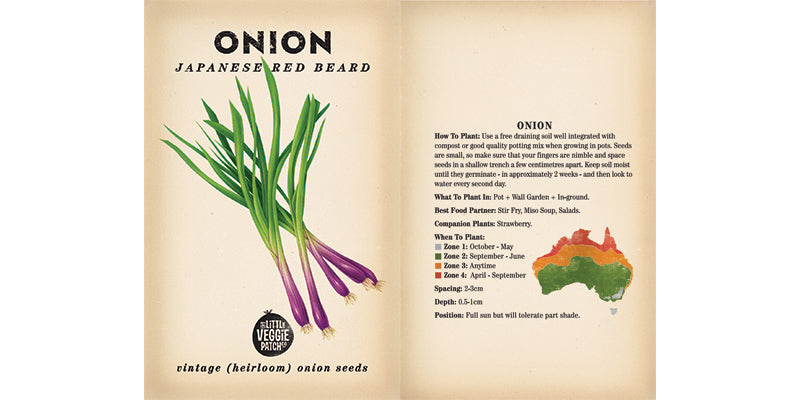Spring Onion 'Japanese Red Beard': Hero of the Month
There’s nothing quite like a stage name to build a bit of hype and to reinforce a legend. How many records, for example, would Ice-T have sold under his given name, Tracey Marrow? Would "Ice Ice Baby" have been such a hit if it was by an artist named Rob Van Winkle? However, sometimes the truth is greater than any alias, especially when backed by enduring substance. The same rings true in the vegetable world. The Red Beard Onion is both talented and enduring and, just like Beyoncé, it will always deliver a hit.
The Red Beard is a bunching type of heirloom onion that comes out of Asia. Thought to have derived from a wild relative of the Allium family in China and Kazastan it was then taken back to Europe and popularised by the Spanish in the 17th century. It is a hardy, fast growing onion that is ideally suited to the home gardener.
A bunching onion, more often known as a spring onion in our parts, the Red Beard has a stalk that is tinged red and that grows to approximately 12cm long and 1.5cm wide; the plant itself grows to around 60cm tall. With green foliage and a mild favour, it is a perennial that is mostly grown as an annual.
When growing from seed, ensure that your soil is well draining and integrated with compost. Because seeds are almost microscopic, tweezers may be the preferred tool for propagating. Create shallow trenches, no more than 1cm deep, and sow a seed every 3-4cm. Keep the soil moist throughout the germination process and look to see the little babies pop up in approximately 7-10 days.
If choosing to start from seedling, the hardiness of the red beard onion is really on show. Rather than separate each seedling and then planting in its own hole, simply laying them flat on the soil and covering the roots over with soil will suffice. After a few days of watering the plants will shoot new roots helping them stand tall in search of sunlight.
As with any edible full sun is preferable, but they will also do well in partially shaded areas. Make sure to keep well watered throughout their lifecycle, which means a water every day or two depending on conditions, and of course more when growing in pots, as they tend to dry out more quickly.
Growing with chamomile will help increase the onion aroma and deter soil born pests. Interplanting with carrots too is a good idea, lessening the chance of aphid infestation. This is particularly helpful if you are growing in early spring when this pest is on the march.
Fast growing, the seedlings will quickly establish and in no more than two months will be ready for harvest, earlier if all the stars are aligned. Rather than pull out the entire onion it is best to cut at the base of the stem, using a knife or scissors, which allows the plant to regenerate and produce the next flush of harvest.
Within a few days of the cut you will notice a new shoot sprouting, and a few week after that, round 2 is on. Perpetual harvesting in this manner is possible until the onions turn slimy or go to seed. At this point, collect the next generation of Red Beards by cutting mature flower heads and allowing to dry.
Where our classic, slow-burning, bulbing onion is destined for french cooking, the Red Beard finds its natural environment in fast-paced Asian cuisine. Quick and punchy stir fries and soups are the perfect partners for this swiftly growing vegetable. The Red Beard is active and energetic, ready to dance all night and get up early for a swim.

